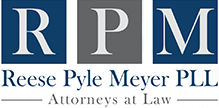The “Joint Employer” According to the NLRB
The National Labor Relations Board (“NLRB” or “Board”) is an independent federal agency tasked with governing private-sector labor relations, primarily by enforcing the National Labor Relations Act (“NLRA”). The NLRA grants and limits employees’ rights to engage in collective bargaining, and proscribes covered employers and unions from engaging in “unfair labor practices.” In other words, employers covered by the NLRA must bargain with unionized workers over the terms and conditions of employment, and correspondingly could be subjected to union activities designed to apply economic pressure—eg. boycotts, picketing, et cetera. Unions, for their part, may not apply that economic-pressure against entities other than the employer. Consequently, temporary staffing agencies become an attractive option for many businesses. Businesses can obtain a workforce and comply with the NLRA without incurring its potentially costly obligations, and at the same time avoid the risk of being subjected to a union’s economic-pressure activities.
Businesses negotiating service contracts often have a primary concern: at what point does a worker supplied by a staffing agency become an employee of the business? Stated another way, how much control can the business exercise over the temporary employee before that business is considered the employer for purposes of the NLRA? Under the NLRA, a “joint employer” consists of two or more separate entities that “share or codetermine” matters governing a workforce’s essential terms and conditions of employment. In the NLRA context, all joint employers are treated as a primary employer, incurring the same obligations and potential exposure to economic-pressure activities as if it were the only employer.
For the thirty-one years prior to August of 2015, the NLRB determined “joint-employer” status by applying a standard it developed in TLI, Inc., 271 NLRB 798 (1984) and Lareco Transportation, 269 NLRB 324 (1984). Under the TLI-Laerco standard, the NLRB required a party advocating for joint-employer status to provide evidence of three factors: (1) that the alleged employer had direct and immediate control over the workforce, (2) that the alleged employer exercised that control in practice, and (3) that the employer’s exercise of that control was/is substantial and not “limited and routine.” Thus, businesses could contract with temporary staffing agencies to staff projects and retain control or a final say over the workforce, provided the business did not regularly exercise that control.
Then, in August of 2015, the NLRB issued its decision in Browning-Ferris Industries, Case 32-RC-109684, greatly expanding the Board’s standard for assessing joint-employer status for private-sector entities. The NLRB decided that instead of determining whether an entity exercised control over the terms and conditions of employment, the Board would consider a “reserved” right to control, regardless of whether the entity actually exercised that right. Additionally, the Board would no longer require that an entity exercise direct and immediate control over a workforce; rather, indirect control would be sufficient. For example, a business entity might indirectly influence a contractor’s workforce’s employment terms through contract, negotiation, or simply by pressure to maintain the business relationship. The Board held that it would consider such indirect influence as a factor towards finding joint-employer status between the business entity and the primary employer.
As a consequence of Browning-Ferris, business entities contracting with professional/temporary staffing agencies—and perhaps to a lesser degree, franchisors—have been forced to reassess their service/franchise contracts to determine whether they reserved the right to control any of the supplied workforce’s terms of employment. Did the entity require workers to submit to a drug test? Did it reserve the right to refuse to allow access to any staffing-agency employee onto its premises? Or similarly, does the franchisor require the franchisee’s employee to maintain a certain professional standard or appearance. The answers to those questions regarding customary indirect control now carry ramifications under the NLRA.
Hailed as a victory for labor, Browning-Ferris appeared to be short-lived. On December 14, 2017, the National Labor Relations Board issued its decision in Hy-Brand Industrial Contractors-Bradt Construction Co., Case 25-CA-163189, overruling its Browning Ferris decision, and delivering an early Christmas present businesses that heavily contract with professional/temporary staffing agencies, and franchisors. Once again, business entities had the opportunity to exercise greater indirect control over a temporary workforce, and staffing agencies stood poised to capitalize on a return to more favorable regulatory conditions.
On February 26, 2018, the NLRB vacated its Hy-Brand decision, due to a determination by the Board’s Designated Agency Ethics Official that newly-appointed Member, William Emanuel, is, and should have been, disqualified from participating in the Hy-Brand proceedings. Thus, the Browning-Ferris joint-employer standard remains the law, although for how long is unclear. The NLRB’s willingness to drastically change its “joint-employer” standard three times in two years raises serious questions regarding whether businesses can rely on the current standard when negotiating service and franchise contracts. At the moment, the NLRB’s joint-employer decisions appear to be purely political, with the standard tied to the Board’s current membership. Business entities should review their service contracts, identify areas where would like to exercise control over a contractor’s workforce, and plan or renegotiate as appropriate.
Our attorneys at Reese Pyle Meyer have significant experience handling employment-related problems and concerns. Contact Robert N. Abdalla at [email protected] with any questions.

